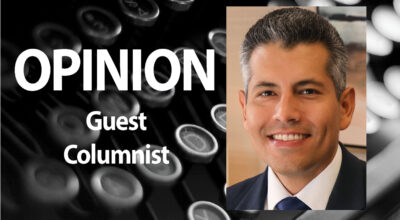The Development of the SH105 Toll
Published 8:36 am Monday, March 28, 2016
From Conception to Concrete
By Duane Gordy
The development of a new infrastructure, driven by a surge in growth, sometimes brings conflict in the community. This is not a new concept, however, the last few decades have developed these conflicts into a significant issue. The sad truth is the fine art of developing an idea has been lost. This applies in many aspects of life – personal and in business.
In order to reduce potential conflict, we have come to the conclusion that it would be best to introduce pertinent information that applies to this project ahead of schedule. A series of articles will be released that aim to educate the public on the process that, seems Herculean at best.
The goal is to keep the public informed and for us to be transparent in our endeavors to improve our community. It has been assumed that all details are immediately available at the conception level of project development, and that is not the case. This particular project concept has been established for a long time, minus the specific details. Our goal is to provide you with all of the specifics as they become available, and to address any concerns with the project itself. It is important to us that the community is apprised of our mission, and that no one feels kept in the dark.
First and foremost, I would like to shift focus to our primary goal. We have, and have always believed in the importance of local involvement, and the exchange of ideas. This would also be true as it applies to environmentally sensitive areas. Although many believe that these two areas are not connected, the fact is, that by using specific attributes of each to improve the other makes them compatible and connected.
One example would be the ability for the transportation project to provide flood relief to some areas of Orange County. This could easily be accomplished by developing an aqueduct system under developed and elevated roadways, then dispersing water in the wetland areas that desperately need it. Eco-friendly projects can be designed and constructed while providing other needed services.
There is beauty in the development of a project that can also bring relief to our struggling wetland and its creatures. This unexpected additive is enough to justify the project’s development alone. Although the “green energy and construction” approach has been used in many large building projects, it has been a foreign concept in the road construction vision. It does not have to be that way, and we have built a process that allows for the integration of these two worlds, while still keeping a keen eye on cost effectiveness in our venture.
The problem we face with most ecologically based projects is how to pay for them. They are exclusively considered projects that provide a need, yet create no revenue return. To reiterate, there is no immediate return on the investment to pay for this project. This project relies on us to pay for it now, so that in 30 or 40 years, those generations will see the benefit.
Many roads are constructed using tax or fuel tax dollars to provide a roadway that may never provide a direct benefit to local residents. When these projects are constructed, they fall into a similar category.
What we have attempted to do, is provide a process in which we evaluate the use of all money invested to provide a structure that meets several needs, while finding ways to ensure that one of two events happen: Either the project collects its own revenue and pays for itself, or the growth that is generated by the development pays most, if not all, of the cost needed to develop the project.
We have found several ways that all our goals can be met, while benefiting the community, but it can only happen with a collaborative effort from the community. Everyone can have a seat at the table, as this project comes into focus.
Duane Gordy is Executive Officer of the Community Development Education Foundation. He can be reached at dgordy@mail.com





